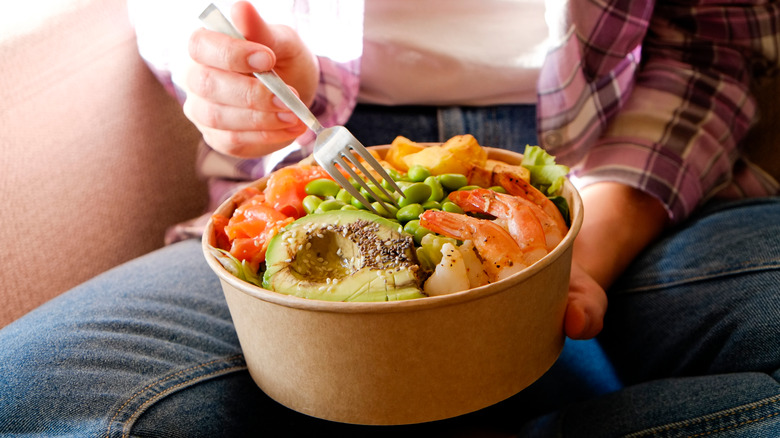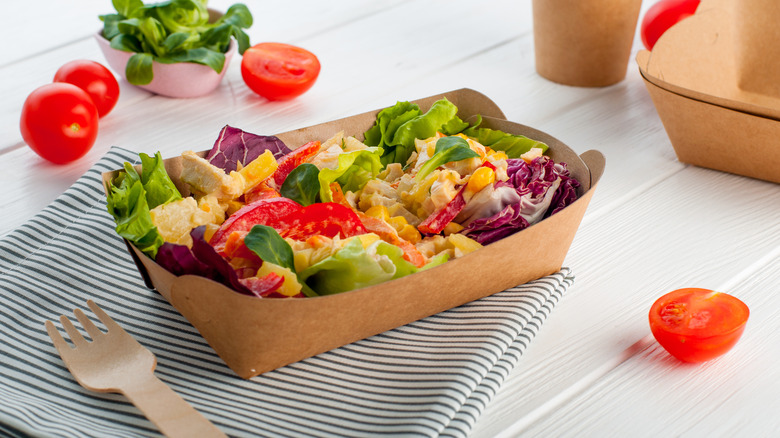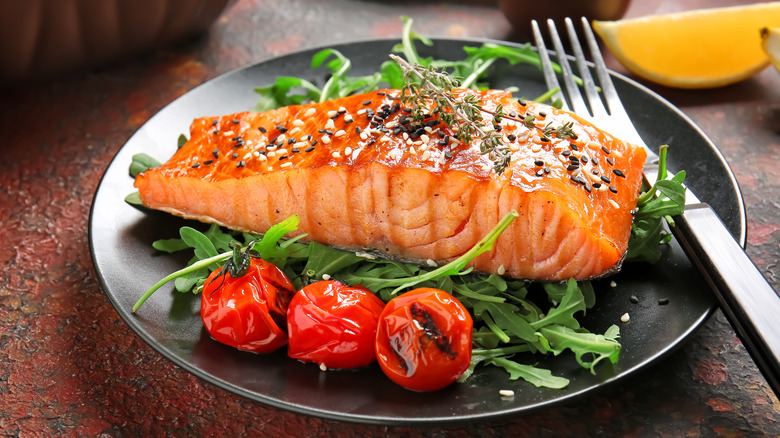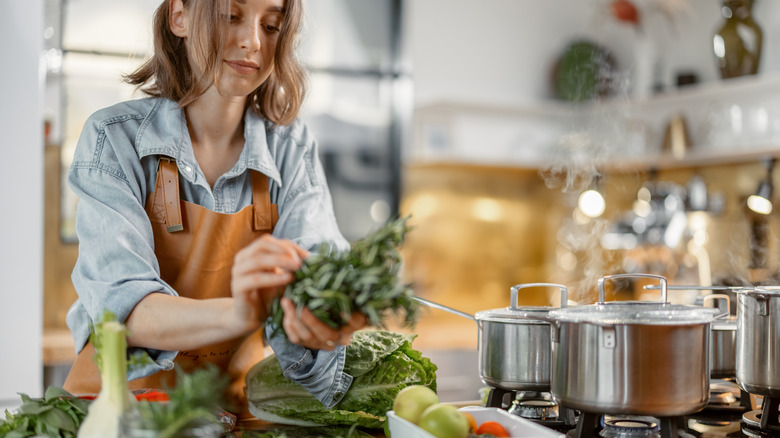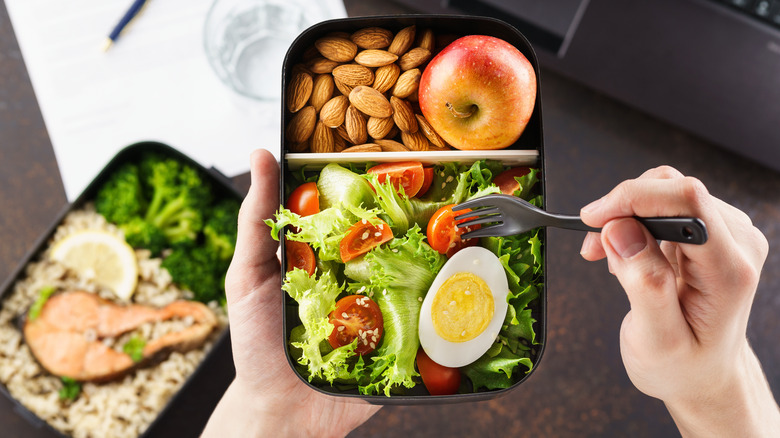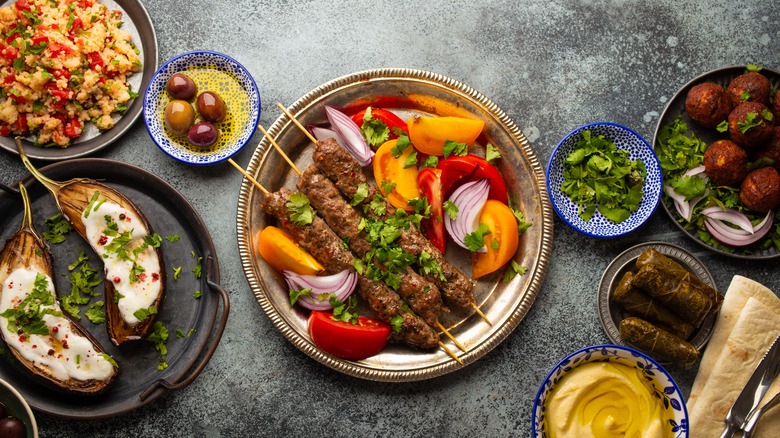Your Guide To Indulging In Takeout While Trying To Live A Healthy Lifestyle
For the days when you might not feel like cooking, you're likely to get takeout. Even if you cook every day and enjoy doing it, you could probably use a break every now and then. In fact, the U.S. Bureau of Labor Statistics showed that the average American household spent about $3,526 on takeout in 2019. Your options for takeout may almost feel limitless. There's food of all types, flavors, and cultures available at a variety of restaurants.
If you're going for healthy foods, this might feel like a challenge. However, because of the variety of options out there, it might be easier than you think. "I would try to stick to things that you know are better for you," owner of Main Squeeze Natural Foods Cafe, Leigh Lockhart tells Vox Magazine. "Choose things that are the least processed and the least fatty and carby as possible." It's important to keep the ingredients, preparation, and flavors in mind when you're looking for a delicious yet healthy meal on the go.
Look for the vegetables
One of the most important things to look for in healthier takeout choices is vegetables. Maybe that's one of the first things that comes to mind when you think of healthy food. But, don't worry, this doesn't automatically mean you have to eat a salad in order to eat more vegetables.
"If you're going to get a pizza, maybe get a pizza with a lot of vegetables instead of pepperoni," owner of Main Squeeze Natural Foods Café, Leigh Lockhart, tells Vox Magazine. Aside from substitutions, you'll also find many options where vegetables can be steamed or cooked into a savory dish.
Lean proteins
If you're not looking for the bulky red meats like you'd find in a burger or a hotdog, look for dishes that consist of lean proteins. These can be meats like skinless chicken, fish, and shrimp, or a non-meat option such as black beans, peas, and lentils. Healthy protein helps support your muscles and tissues as well as promoting that feeling of fullness. Even if it may not seem like it, there are a variety of lean proteins to consider for your healthy dish (via Healthline).
Preparation is key
How your food is made and prepared is just as important as what the food is. In general, try to avoid fried and processed foods. They tend to be heavy in trans fats, which are often harder for your body to break down.
"Meals that leave a greasy layer on your lips have been prepared with too much fat," consultant for Sensible Digs, Wendy Lord R.D., tells CleanPlates. Look for foods that are prepared with a sautée, steam, grill, or bake method instead. It's also important to keep an eye out for foods high in salts. Because of the salt and trans fat, ask for your sauce on the side to control how much you put on the dish.
Portions
Eating healthy also means eating healthy portions of food because you don't want to be left with a heavy feeling after a good meal. You want to feel full and satisfied but not over-stuffed. This is important to keep in mind because restaurants tend to serve bigger plates than you would probably eat at home. Consider splitting your food into two portions to save one for later, or get something you can split with other people (via CleanPlates).
Where to find it
Naturopath and nutritionist Rhiona Robertson tells Byrdie that she recommends Mediterranean dishes; "You can get some amazing Greek meals full of fresh seafood and healthy salads, and the dressings use vinegar and olive oil rather than creamy mayonnaise or oils like canola." Many of these dishes focus on fresh ingredients in a variety of styles with vegetables, cooked or in a salad. Asian cuisine also offers up some options to try, such as a Thai summer roll, Chinese steamed chicken and broccoli, or a Japanese California roll. Mexican dishes like soft tacos and chicken fajitas are another great option. For something Italian, go for a thin-crust pizza or a spinach salad.
"[Look for] a rainbow of color from fruit and vegetables full of phytochemicals, fiber, and nutrients. The more color from these sources on your plate, the better," Robertson tells Byrdie. "Pairing that with a lean source of protein like fish or plant-based protein is important to ensure you get a good balance of macronutrients."
